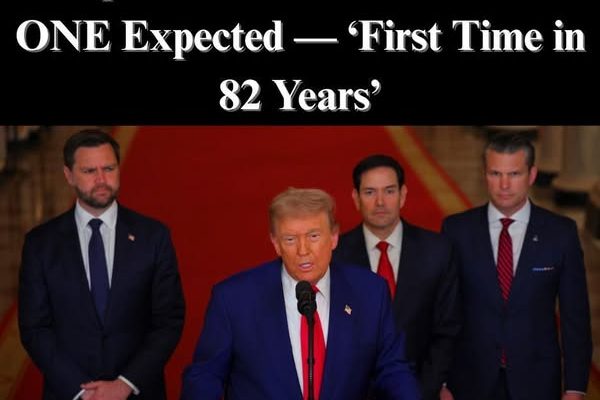President Donald Trump continues to hint at a potential visit to Fort Knox, Kentucky, to confirm the presence of the gold stockpile, which has long been reported to be housed at the military facility.
“We’re going to go into Fort Knox to ensure the gold is there,” Trump stated.
As per the U.S. Mint, the last occasion when a gold vault was examined by individuals other than authorized personnel was during President Franklin D. Roosevelt’s visit to the Bullion Depository in 1943 — 82 years ago.
Trump made comparable remarks in February, informing reporters, “You know that? We’re going to go into Fort Knox. Are you aware of that?”
“One of the things we wish to investigate — I mean, we hope everything is fine with Fort Knox, but we’re going to visit Fort Knox, the legendary Fort Knox, to confirm the gold is there,” he remarked.
“Where could the gold have gone?” a reporter inquired.
“If the gold isn’t there, we’re going to be very upset,” the president responded.
According to the United States Bullion Repository, as of Monday, there were 147.3 million ounces of gold in circulation, valued at approximately $435 billion. Gold opened at $2,950.01 per ounce in the markets.
The United States Bullion Depository at Fort Knox has been safeguarding the nation’s precious metal reserves since 1937, becoming a symbol of security and protection. In addition to storing gold reserves, Fort Knox also functions as the U.S. Army’s Human Resources Command Center and hosts the Army’s largest annual training event each summer, as reported by the Economic Times.
“We’re going to open the doors. We’re going to inspect Fort Knox,” Trump declared in a speech to Republican governors on Thursday evening. “I don’t want to open it, and find the cupboards are bare,” he added.
The Army post is situated approximately 56 km (35 miles) south of Louisville and covers 109,000 acres across three Kentucky counties—Bullitt, Hardin, and Meade.
Originally founded as Camp Knox during World War I, this location functioned as an artillery training center, as stated on the Army post’s website. It was officially designated a permanent installation in 1932 and has been referred to as Fort Knox ever since.
The initial shipment of gold reached Fort Knox in 1937, with the 1st Cavalry Regiment tasked with safeguarding the highly secure delivery.
Following the onset of World War II in Europe, the U.S. Army established the Armored Force at Fort Knox, where thousands of soldiers received training and were introduced to tank warfare. For nearly 80 years, the post has been famously recognized as the “Home of Cavalry and Armor.”
According to the U.S. Mint, during routine audits conducted to assess its purity, only small amounts of gold have been extracted from Fort Knox. The depository has not experienced any gold transfers in or out for many years, apart from these samples.
The Fort Knox depository is regarded as one of the most secure facilities globally. The specific structure and security measures are known only to a select few, and no single person possesses complete knowledge of the procedures necessary to access the vault.
Publicly accessible information indicates that the facility was built in 1936 using 16,000 cubic feet of granite, 4,200 cubic yards of concrete, 750 tons of reinforcing steel, and 670 tons of structural steel. Throughout its history, the heavily guarded depository has only breached its strict no-visitors policy on three occasions.
Kentucky GOP Senator Mitch McConnell humorously commented on the potential “missing” gold at Fort Knox.
During a Senate budget hearing, McConnell inquired of Army Secretary Daniel Driscoll, “I’m pleased you were able to visit Fort Knox yesterday. Did you inspect the gold?”
The room erupted in laughter at McConnell’s jest, which seemed to be a dig at President Trump and his previous comments regarding the location of the gold.
During a Senate budget hearing, McConnell inquired of Army Secretary Daniel Driscoll, “I am pleased that you had the opportunity to visit Fort Knox yesterday. Did you inspect the gold?”
The audience chuckled at McConnell’s humor, which seemed to be a dig at President Trump and his previous comments regarding the location of the gold.
WATCH:

